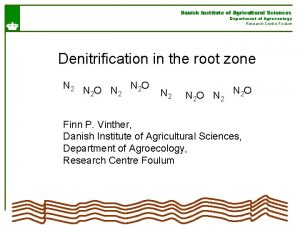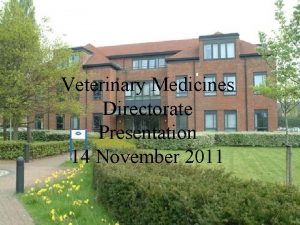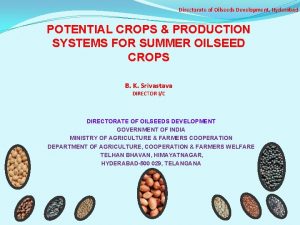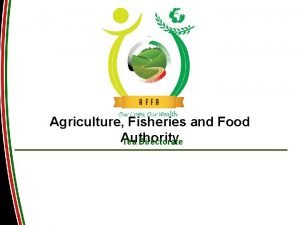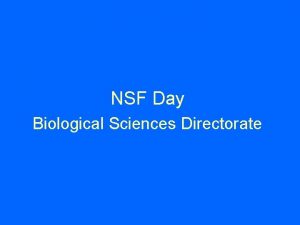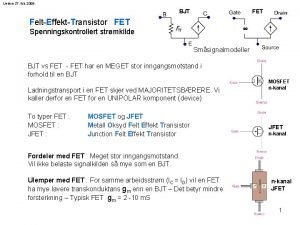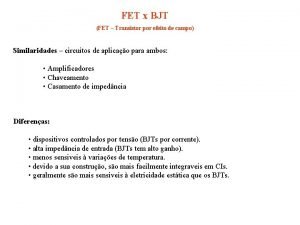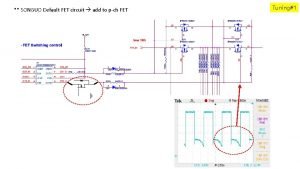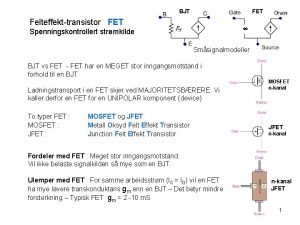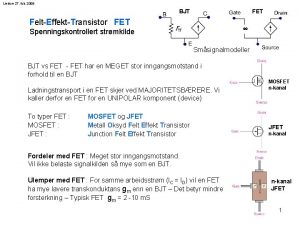DIRECTORATE CURRICULUM FET PROGRAMMES Agricultural sciences Virtual lessons



























- Slides: 27

DIRECTORATE CURRICULUM FET PROGRAMMES Agricultural sciences Virtual lessons Term 2

Integrated approach to learning

VOCABULARY DEVELOPMENT AND LANGUAGE USE

Importance of key concepts

Parturition/birth and dystocia

Key terms • Parturition or calving is the normal ending of a pregnancy. It is the process of ejection of the foetus and the placenta from the uterus of the mother. • Dystocia is the term used to describe a difficult birth.

Conditions that interfere with the parturition process! • • Offspring that is too large for the cow. Multiple births: Premature or late birth Induced parturition Incorrect presentation of the calf Incomplete cervical dilation Vaginal tear

Dystocia The term dystocia is used to describe any situation or reason why a cow is unable to deliver a calf. The cow experiences a difficult parturition process. If the breeder or veterinarian does not intervene in time it may lead to the death of both the cow and the calf. Factors that may cause dystocia include: • Incorrect presentation, position and posture • large foetuses that cannot move through the birth canal • Torsion of the uterus • Uterine inertia • Malformed foetuses.

Signs or characteristics of a cow approaching parturition • • • The vulva softens and becomes swollen. The cervix secretes stringy mucus The cervix dilates. The cow urinates and defecates frequently due to the pressure exerted by the foetus on the bladder and rectum. There may be a change in the cow’s body temperature. ‘The allantois ruptures leading to expulsion of the allantois fluid (‘the water breaks’). The cow’s udder becomes swollen and milk starts dripping from the teats. The belly droops. The soft tissues around the tail head look sunken due to the relaxation of the pelvic ligaments.

Behavioural signs of oncoming parturition • The cow isolates herself from the herd. • The cow stops eating. • The cow shows signs of distress and discomfort. • The cow is restless, circles, bites or kicks her flank, bawls and groans

The functions of the layers covering the foetus • Amnion: This is the inner embryonic membrane. It contains a fluid that surrounds the embryo, called the amniotic fluid. The amniotic fluid prevents the embryo from attaching to other tissues and also protects the embryo against shocks, injuries, changes in temperature and dehydration. In addition, it serves as a lubricant in the reproductive tract during parturition.

The functions of the layers covering the foetus • Chorion: The chorion is the outer membrane, which is firmly attached to about 150 caruncles on the uterus wall. The chorion contributes to the development of the embryo by aiding the production of the placenta.

• Placenta: The placenta is the area of attachment of the foetus with the cow. The placenta is very rich in blood supply, and consists of maternal and embryonic tissue. The blood of the embryo comes in close contact with the blood of the mother, but never mixes. The embryo receives nutrients and oxygen, and gets rid of waste products and carbon dioxide by means of osmosis and diffusion.

Milk production (lactation)

Milk let-down • • The cow starts secreting normal milk three days after parturition. The lactation curve rises until the maximum production is reached about eight weeks after calving. This peak is maintained for about two weeks and production then gradually starts dropping until the cow is dried up in preparation for the next parturition. When milk production reaches its peak, the butterfat content is at its lowest quantity. As milk production decreases, the percentage of butterfat is at its highest.

Process of milk let-down

Revision questions 1. Identify the process in the picture above. • 2. • • • 3. • Milking or lactation Identify three visible stimuli in the picture. The milking equipment The calf Touching of the udder Name the hormone responsible for the above process. Oxytocin 4. Name the reproductive process which preceeds the above process. • Pregnancy or gestation

Milk let-down process and the hormones involved • When the nerves in a cow’s udder are stimulated, the hormone oxytocin is secreted by hypophysis gland in the brain. • Oxytocin causes contractions inside the udder cavities, which cause the milk to ejected. • Certain nervous stimuli must take place in the udder. 1. The washing of the udder with luke-warm water 2. The presence of the calf 3. The sucking action of the calf 4. Familiar sounds in the milking stable also lead to the secretion of oxytocin.

Hormones • Oxytocin. The hormone oxytocin is responsible for the release of milk in the udder. • Oxytocin is secreted by the hypophysis gland. • Transported to the udder by the blood. • Cows should be treated calmly before milking, because rough handling could cause the excretion of the hormone adrenalin. • Adrenalin lessens the blood flow to the udder, resulting in less oxytocin and incomplete ejection of the milk.

Importance and function of colostrum • During the first three days after calving, the milk secreted differs from ordinary milk. • We call this first milk colostrum/Beesting. • Colostrum is more yellow than ordinary milk • Colostrum with higher beta carotene content, and antibodies that give the new born calf resistance to diseases. • The rate of absorption of the protein antibodies is greatest during the first six hours after birth. • A calf hould suckle from its mother for at least the first 24 hours of its life and the farmer should make sure that the calf ingests enough colostrum within the first eight hours.

Properties and fuctions of colostrum • High in the mother’s antibodies (immunoglobulin): this strengthens the immunity of the new-born calf • Higher in energy than normal milk • The new-born calf does not have fat reserves yet, so the milk needs to provide all the necessary energy for the calf to stay warm and start initial movements • Serves as a laxative, to clear out the calf’s digestive tract in the first few days of life • Rich in minerals and fat-soluble vitamins. • Colostrum is rich in Vitamin A, which is essential for the development of the lymphatic system and epithelium tissue, which are vital for the young to resist disease.

Normal milk and colostrum

Colostrum vs Whole milk

The amount of milk produced by a cow is influenced by: • Age of the cow, the more pregnancies and lactations a cow has had, the more milk the cow is likely to produce. • Pregnancy inhibits milk yield, especially after the fifth month. • An increase in the levels of oestrogen and progesterone during pregnancy inhibits milk secretion. • Temperature changes can either increase or decrease milk yields.

The normal lactation curve

Lactation curve Peak Lactation Need to calve to lactate

Revision questions 1. Give two stimuli initiated by the milker during the milking process. • Washing of udder • Massage of the udder • Appearance and sound of the milker • Milking action 2. What hormone inhibits milk ejection? • Adrenalin 3. State bacterial diseases which affects the udder. • Mastitis /metritis
 Directorate curriculum fet
Directorate curriculum fet Danish institute of agricultural sciences
Danish institute of agricultural sciences The human sciences tok
The human sciences tok Australian curriculum lessons
Australian curriculum lessons Bscs curriculum
Bscs curriculum Legal metrology department delhi contact details
Legal metrology department delhi contact details European directorate for the quality of medicines
European directorate for the quality of medicines Health audit directorate
Health audit directorate Veterinary medicines directorate
Veterinary medicines directorate General directorate of animal health and production
General directorate of animal health and production Directorate general for competition
Directorate general for competition Turkey ministry of finance
Turkey ministry of finance Credilab
Credilab Directorate of oilseeds development
Directorate of oilseeds development Plant protection directorate nepal
Plant protection directorate nepal Directorate of logistics
Directorate of logistics Technology applications ec-12
Technology applications ec-12 Materials and manufacturing directorate
Materials and manufacturing directorate Vehicle technology directorate
Vehicle technology directorate Osha directorate of training and education
Osha directorate of training and education Marketed health products directorate
Marketed health products directorate Dpw fort bragg nc
Dpw fort bragg nc Directorate of health services kashmir
Directorate of health services kashmir 399
399 Hsarpa
Hsarpa Agriculture fisheries and food authority
Agriculture fisheries and food authority Shalaarth
Shalaarth Norwegian directorate of health registration
Norwegian directorate of health registration

